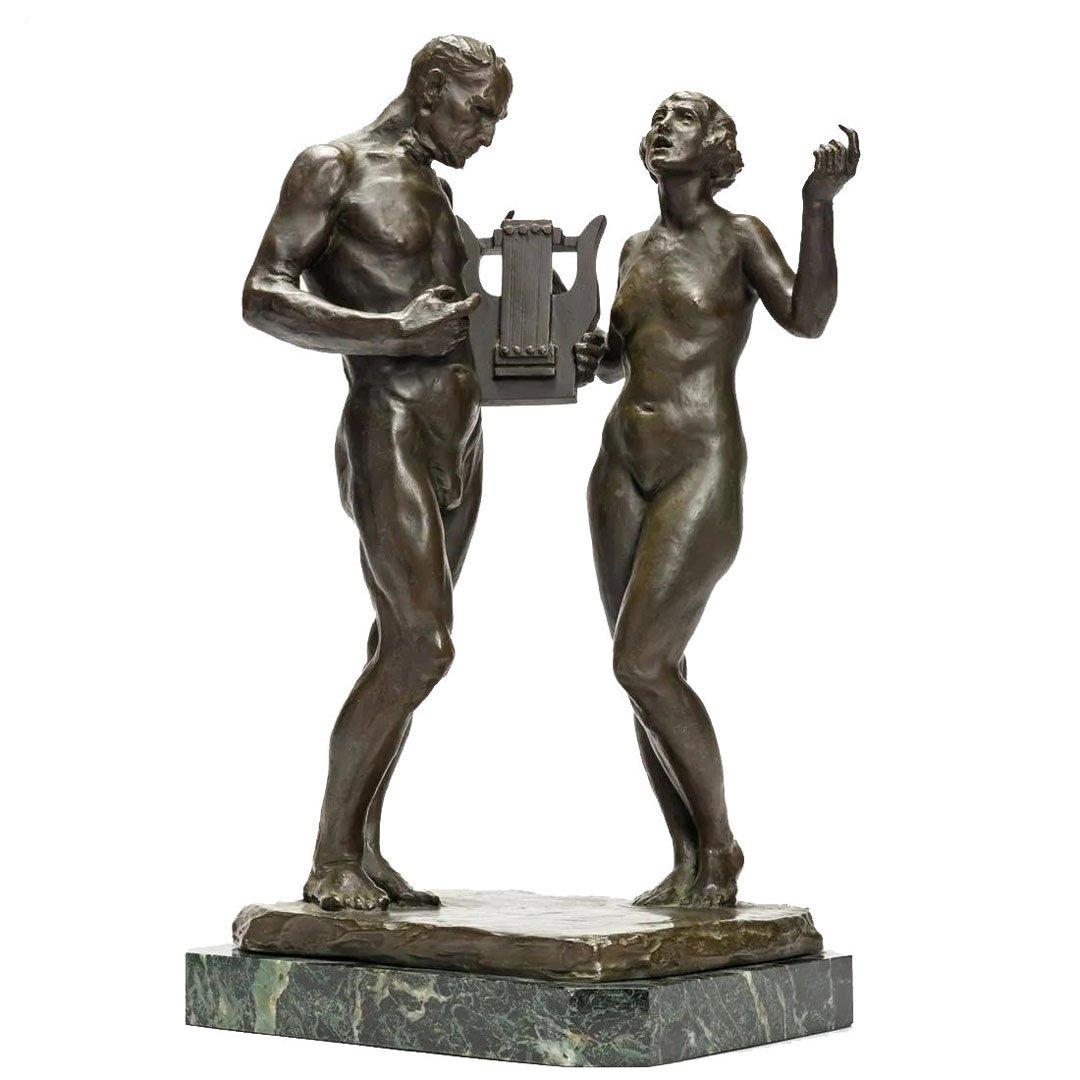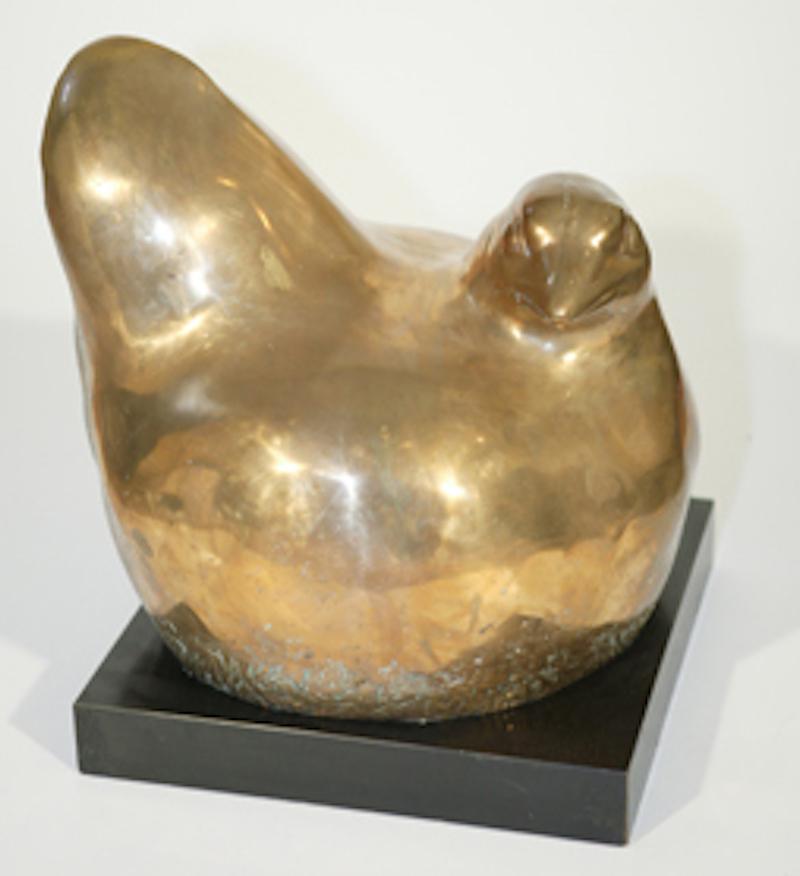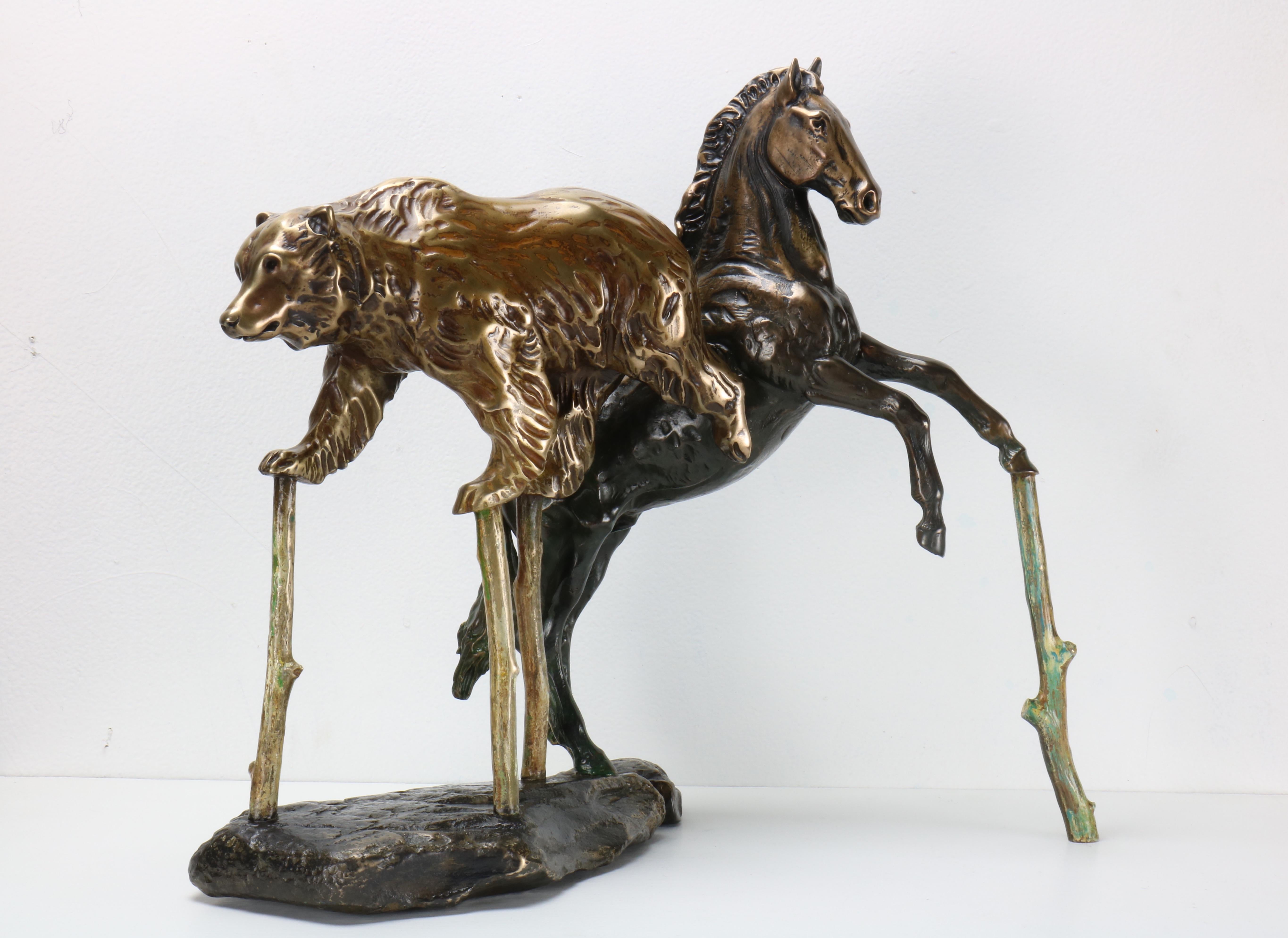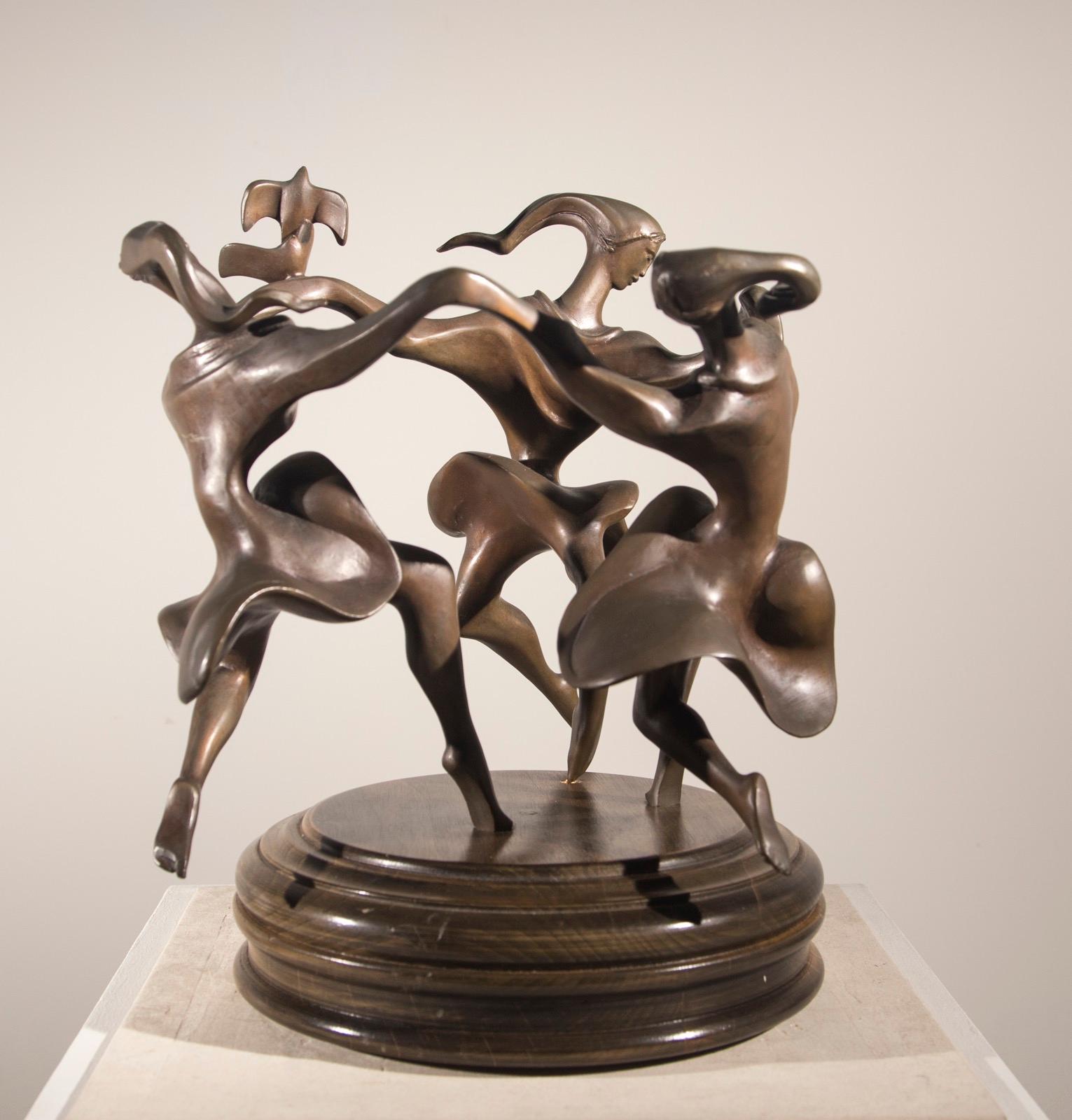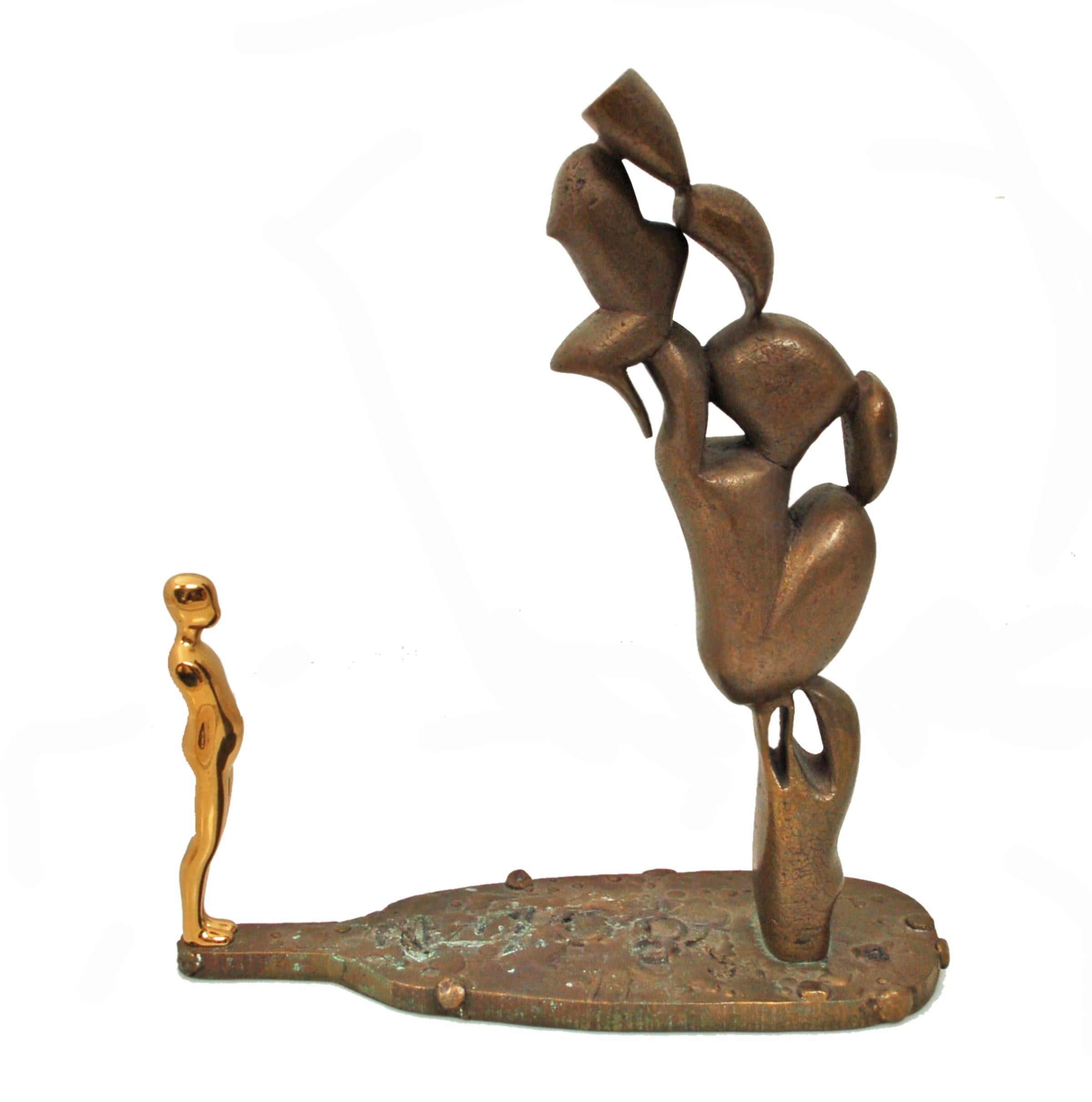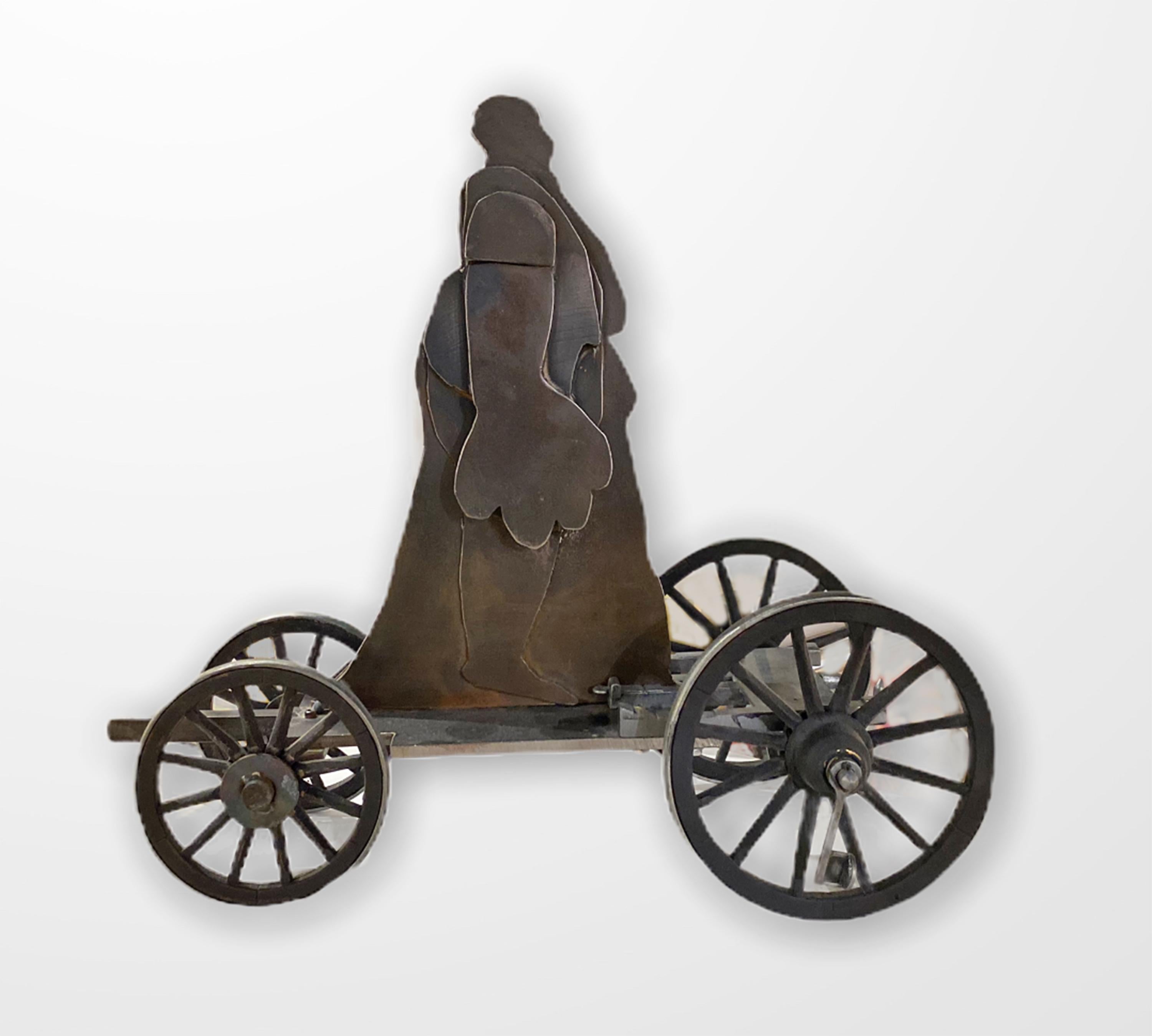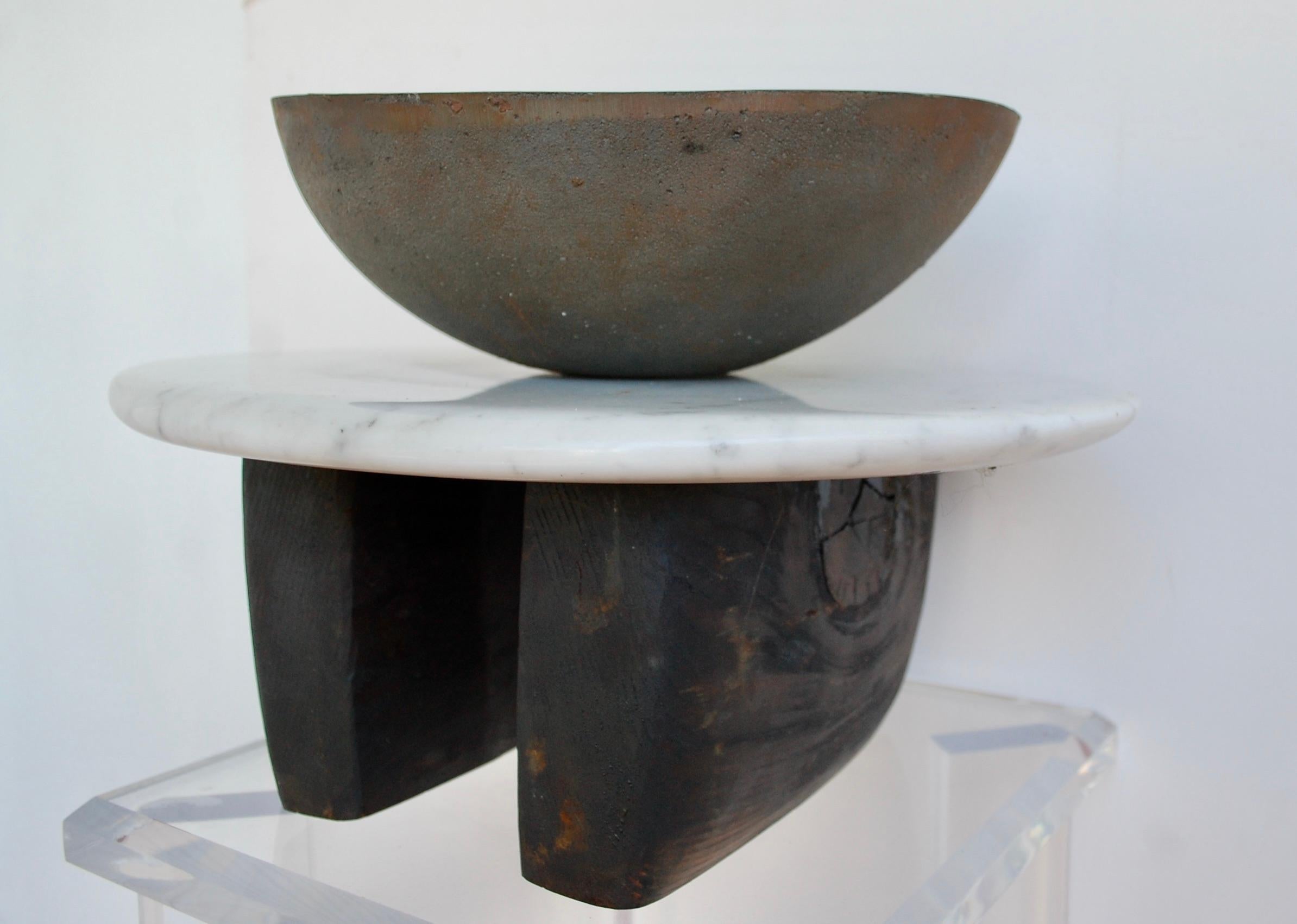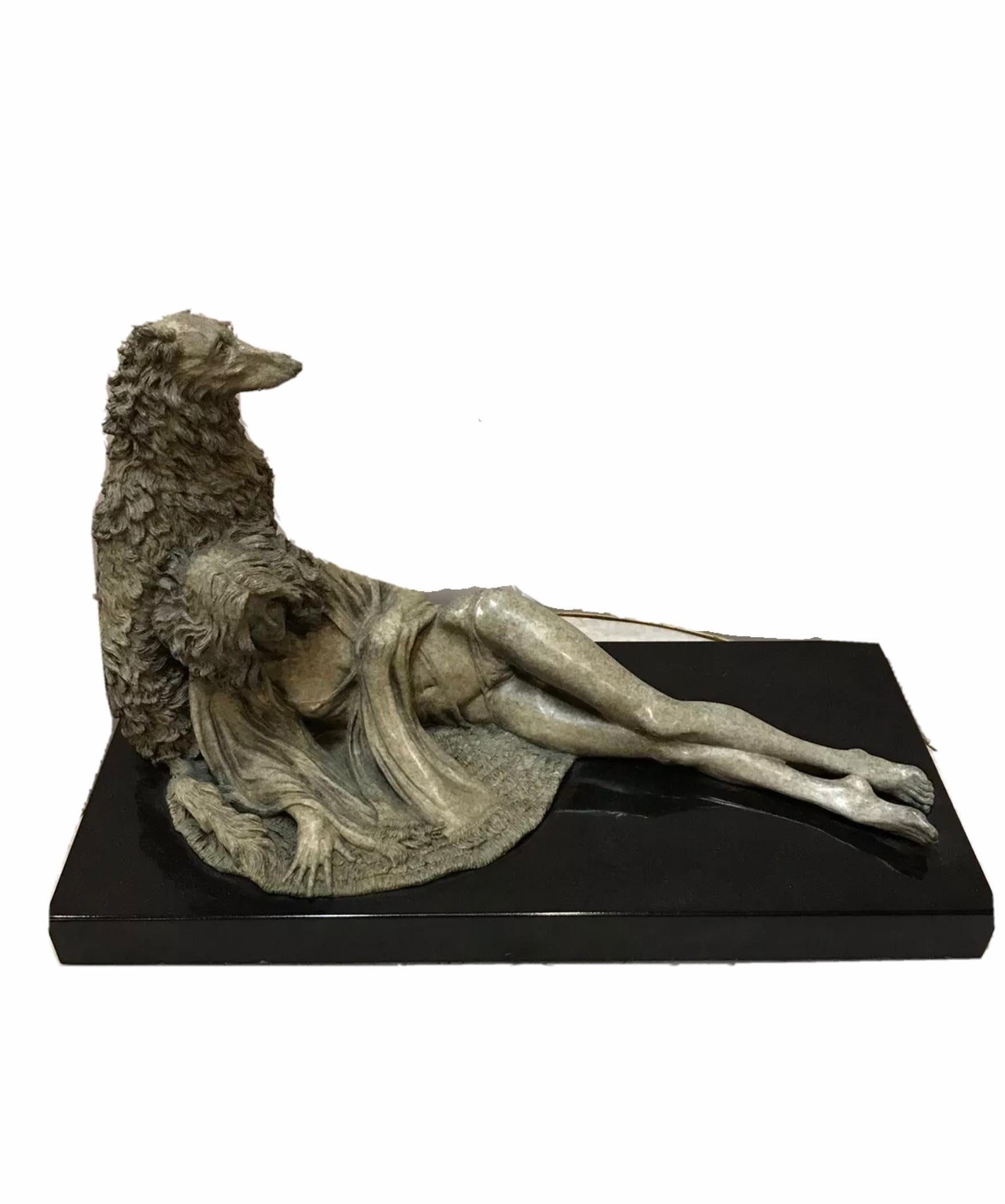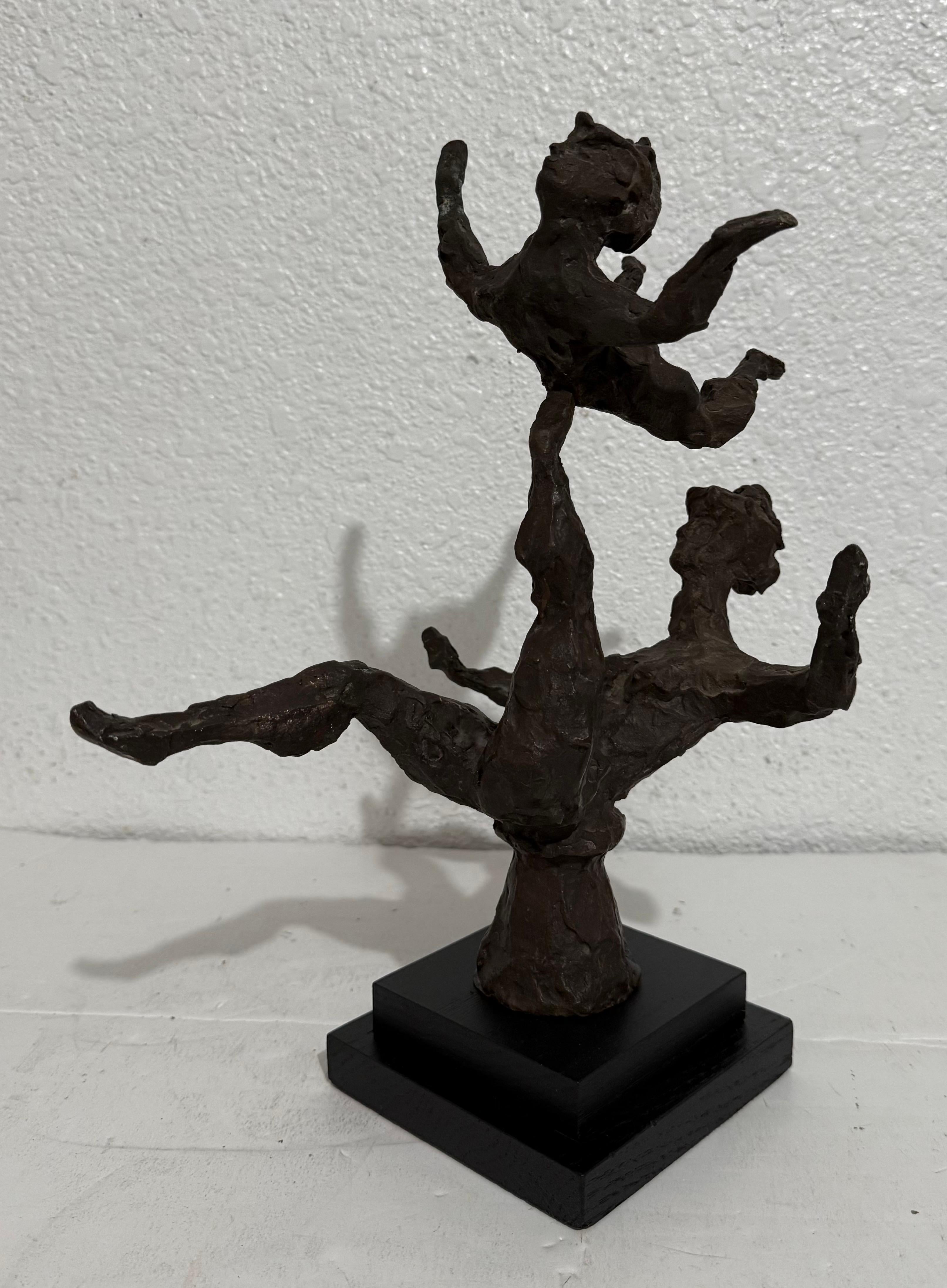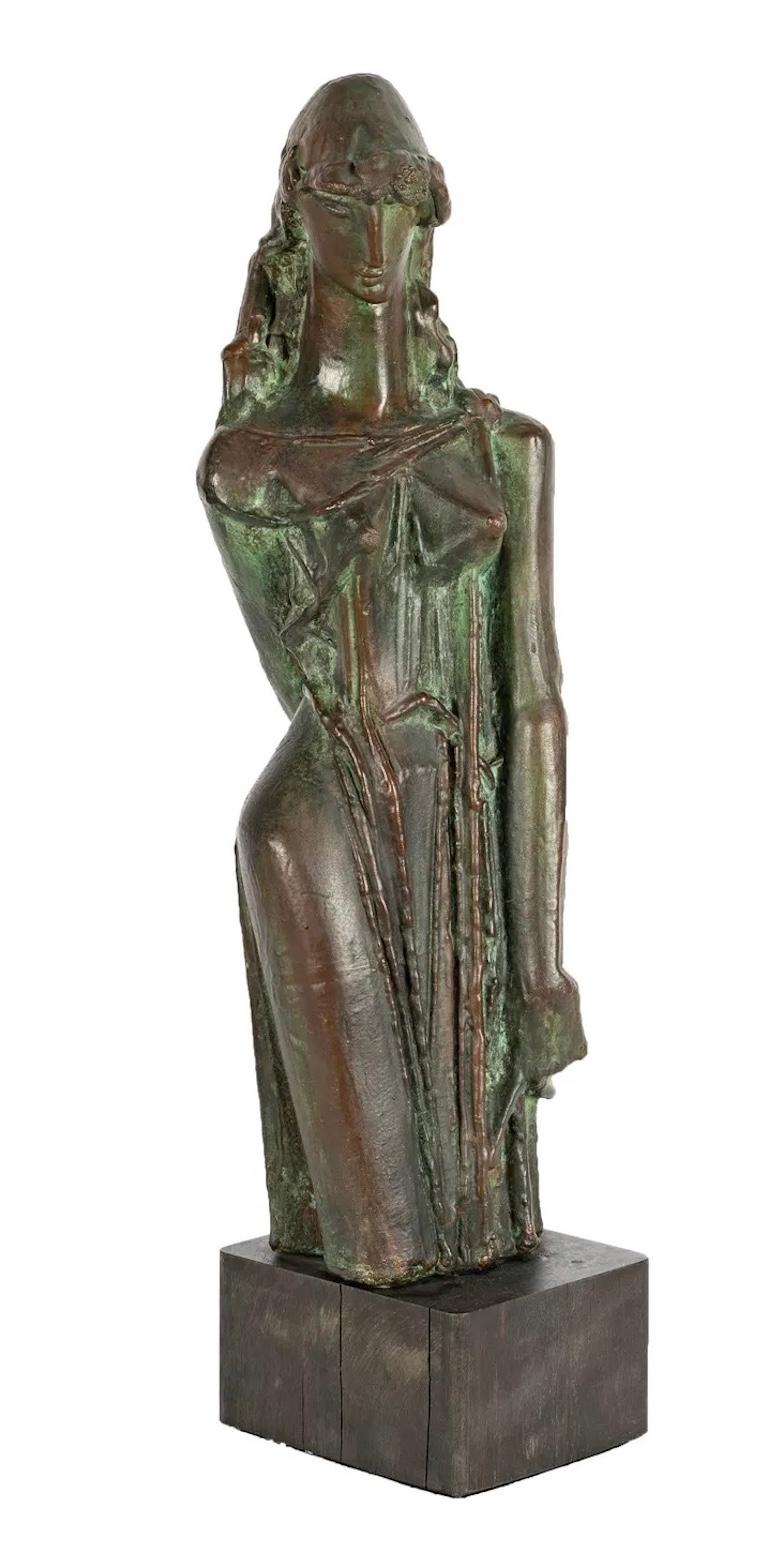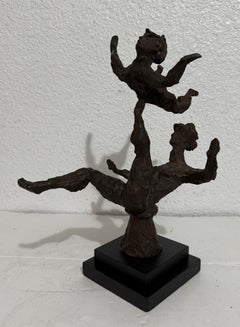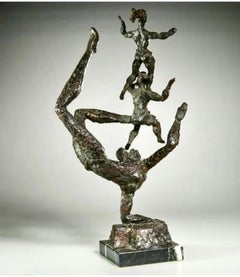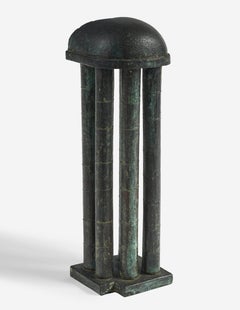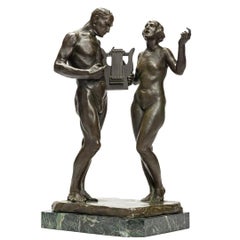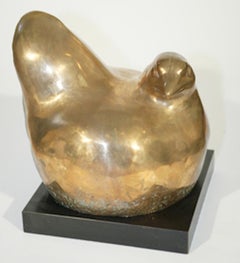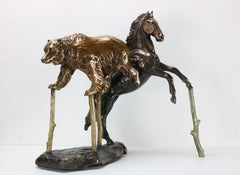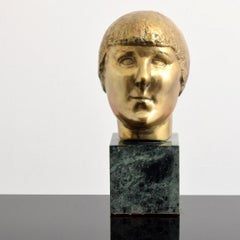
Bronze Modernist Sculpture Portrait, Gertrude Stein by Minna Harkavy WPA Artist
View Similar Items
Want more images or videos?
Request additional images or videos from the seller
1 of 6
Minna HarkavyBronze Modernist Sculpture Portrait, Gertrude Stein by Minna Harkavy WPA Artistc.1930-1940
c.1930-1940
About the Item
- Creator:Minna Harkavy (1887 - 1987, Estonian)
- Creation Year:c.1930-1940
- Dimensions:Height: 16 in (40.64 cm)Width: 7.25 in (18.42 cm)Depth: 10 in (25.4 cm)
- Medium:
- Movement & Style:
- Period:
- Condition:
- Gallery Location:Surfside, FL
- Reference Number:1stDibs: LU3827703152
About the Seller
4.9
Platinum Seller
Premium sellers with a 4.7+ rating and 24-hour response times
Established in 1995
1stDibs seller since 2014
1,760 sales on 1stDibs
Typical response time: 1 hour
Authenticity Guarantee
In the unlikely event there’s an issue with an item’s authenticity, contact us within 1 year for a full refund. DetailsMoney-Back Guarantee
If your item is not as described, is damaged in transit, or does not arrive, contact us within 7 days for a full refund. Details24-Hour Cancellation
You have a 24-hour grace period in which to reconsider your purchase, with no questions asked.Vetted Professional Sellers
Our world-class sellers must adhere to strict standards for service and quality, maintaining the integrity of our listings.Price-Match Guarantee
If you find that a seller listed the same item for a lower price elsewhere, we’ll match it.Trusted Global Delivery
Our best-in-class carrier network provides specialized shipping options worldwide, including custom delivery.More From This Seller
View AllChaim Gross Mid Century Mod Bronze Sculpture Balancing WPA Artist Mom and Child
By Chaim Gross
Located in Surfside, FL
Chaim Gross (American, 1904-1991)
Patinated cast bronze sculpture,
Balancing, Mother and child
signed and editioned 1/6
mounted on black marble plinth
14"h x 11.5"w x 8"d (height w...
Category
1960s American Modern Figurative Sculptures
Materials
Bronze
Large Chaim Gross Mid Century Mod Bronze Sculpture Circus Acrobats WPA Artist
By Chaim Gross
Located in Surfside, FL
Chaim Gross (American, 1904-1991)
Patinated cast bronze sculpture,
Three Acrobats,
signed
mounted on black marble plinth
24.5"h x 14"w x 7"d (bronze alone)
Chaim Gross (March 17, 1904 – May 5, 1991) was an American modernist sculptor and educator.
Gross was born to a Jewish family in Austrian Galicia, in the village of Wolowa (now known as Mezhgorye, Ukraine), in the Carpathian Mountains. In 1911, his family moved to Kolomyia (which was annexed into the Ukrainian USSR in 1939 and became part of newly independent Ukraine in 1991). When World War I ended, Gross and brother Avrom-Leib went to Budapest to join their older siblings Sarah and Pinkas. Gross applied to and was accepted by the art academy in Budapest and studied under the painter Béla Uitz, though within a year a new regime under Miklos Horthy took over and attempted to expel all Jews and foreigners from the country. After being deported from Hungary, Gross began art studies at the Kunstgewerbeschule in Vienna, Austria shortly before immigrating to the United States in 1921. Gross's studies continued in the United States at the Beaux-Arts Institute of Design, where he studied with Elie Nadelman and others, and at the Art Students League of New York, with Robert Laurent. He also attended the Educational Alliance Art School, studying under Abbo Ostrowsky, at the same time as Moses Soyer and Peter Blume.
In 1926 Gross began teaching at The Educational Alliance, and continued teaching there for the next 50 years. Louise Nevelson was among his students at the Alliance (in 1934), during the time she was transitioning from painting to sculpture. In the late 1920s and early 1930s he exhibited at the Salons of America exhibitions at the Anderson Galleries and, beginning in 1928, at the Whitney Studio Club. In 1929, Gross experimented with printmaking, and created an important group of 15 linocuts and lithographs of landscapes, New York City streets and parks, women in interiors, the circus, and vaudeville. The entire suite is now in the collection of the Philadelphia Museum of Art. Gross returned to the medium of printmaking in the 1960s, and produced approximately 200 works in the medium over the next two decades. For more than sixty years Chaim Gross's art has expressed optimistic, affirming themes, Judaica, balancing acrobats, cyclists, trapeze artists and mothers and children convey joyfulness, modernism, exuberance, love, and intimacy. This aspect of his work remained consistent with his Jewish Hasidic heritage, which teaches that only in his childlike happiness is man nearest to God.
In March 1932 Gross had his first solo exhibition at Gallery 144 in New York City. For a short time they represented Gross, as well as his friends Milton Avery, Moses Soyer, Ahron Ben-Shmuel and others.
Gross was primarily a practitioner of the direct carving method, with the majority of his work being carved from wood. Other direct carvers in early 20th-century American art include William Zorach, Jose de Creeft, and Robert Laurent. Works by Chaim Gross can be found in major museums and private collections throughout the United States, with substantial holdings (27 sculptures) at the Hirshhorn Museum and Sculpture Garden. A key work from this era, now at the Smithsonian American Art Museum, is the 1932 birds-eye maple Acrobatic Performers, which is also only one and one quarter inch thick.
In 1933 Gross joined the government's PWAP (Public Works of Art Project), which transitioned into the WPA (Works Progress Administration), which Gross worked for later in the 1930s. Under these programs Gross taught and demonstrated art, made sculptures that were placed in schools and public colleges, made work for Federal buildings including the Federal Trade Commission Building, and for the France Overseas and Finnish Buildings at the 1939 New York World's Fair. Gross was also recognized during these years with a silver medal at the Exposition universelle de 1937 in Paris, and in 1942, with a purchase prize at the Metropolitan Museum of Art's "Artists for Victory" exhibition for his wood sculpture of famed circus performer Lillian Leitzel.
In 1949 Gross sketched Chaim Weizmann, President of Israel, at several functions in New York City where Weizmann was speaking, Gross completed the bust in bronze later that year. Gross returned to Israel for three months in 1951 (the second of many trips there in the postwar years) to paint a series of 40 watercolors of life in various cities. This series was exhibited at the Jewish Museum (Manhattan) in 1953.
In the 1950s Gross began to make more bronze sculptures alongside his wood and stone pieces, and in 1957 and 1959 he traveled to Rome to work with famed bronze foundries including the Nicci foundry. At the end of the decade Gross was working primarily in bronze which allowed him to create open forms, large-scale works and of course, multiple casts. Gross's large-scale bronze The Family, donated to New York City in 1991 in honor of Mayor Ed Koch, and installed at the Bleecker Street Park at 11th street, is now a fixture of Greenwich Village. In 1959, a survey of Gross's sculpture in wood, stone, and bronze was featured in the exhibit Four American Expressionists curated by Lloyd Goodrich at the Whitney Museum of American Art, with work by Abraham Rattner, Doris Caesar, and Karl Knaths. In 1976, a selection from Gross's important collection of historic African sculpture, formed since the late 1930s, was exhibited at the Worcester Art Museum in the show The Sculptor's Eye: The African Art Collection of Mr. and Mrs. Chaim Gross. Gross was elected into the National Academy of Design as an Associate member, and became a full Academician in 1981. In 1984, he was inducted into the American Academy of Arts and Letters, with Jacob Lawrence and Lukas Foss. In the fall of 1991, Allen Ginsberg gave an important tribute to Gross at the American Academy of Arts and Letters, which is published in their Proceedings. In 1994, Forum Gallery, which now represents the Chaim Gross estate, held a memorial exhibition featuring a sixty-year survey of Gross's work.
Gross was a professor of printmaking and sculpture at both the Educational Alliance and the New School for Social Research in New York City, as well as at the Brooklyn Museum Art School, the MoMA art school, the Art Student's League and the New Art School (which Gross ran briefly with Alexander Dobkin...
Category
Mid-20th Century American Modern Figurative Sculptures
Materials
Marble, Bronze
Bronze Modernist Sculpture Portrait, Gertrude Stein by Minna Harkavy WPA Artist
Located in Surfside, FL
Minna Rothenberg Harkavy (1895-1987) Estonian-American
signed
bronze portrait bust, marble, stone base.
Minna Harkavy (1887 – 1987) (birth occasionally listed as 1895) was a Jewish ...
Category
Early 20th Century American Modern Figurative Sculptures
Materials
Bronze
Bronze Architectural Model Sculpture Tempio Bretton Architecture Maquette
Located in Surfside, FL
TEMPIO BRETTON: from the catalogue MONUMENTA, 19th International Sculpture Biennale, Antwerp, Belgium.
Tempio Bretton was created in homage to the celebrated English landscapist Capability Brown for the occasion of an exhibition at Bretton Hall in the Yorkshire Sculpture Park , a park in the style of the great master of English garden design. The inclusion in the English garden of a temple ruin, or "eye-catcher," (architectural folly) was used to draw the eye and mind to a focus in time and space, present the beholder with an immediate relationship to an historic past made new within his or her own surroundings, and create a depth of space never before seen in garden design.
I took the idea of the temple ruin eye-catcher and reduced it to a scale at the point where architecture and sculpture merged. Tempio Bretton is not capacious enough to walk into, yet it is considerably larger than a man.
One view of it presents a knot of golden columns clustered together, topped by a dome shape. The only clue from this side to the temple's non-conformity to historic principle is a sharp notch cut into the square base.
Viewed from the opposite side, the cluster of columns capped by an angular top opens up as if to welcome someone in, yet the mysterious core is still impenetrable. These contradictions articulate a confrontation between past and present, and an exciting truth. The past is always at the heart of our constructions in the present.
Walter Dusenbery (born September 21, 1939 in Alameda, California) is an American sculptor. He attended the San Francisco Art Institute, earned an MFA from California College of Arts and Crafts, and then studied in Japan and Italy under Isamu Noguchi. He also held teaching positions at Harvard University and University of California, Berkeley Graduate School of Design. From 1971 to 1988, he lived both in Pietrasanta,Italy, and in Little Italy, New York City. Dusenbery's preferred material is stone, particularly travertine or granite. Dusenbery has a particular interest in adding sculpture to public places, such as federal buildings, to humanize the space, but in 1988, he assembled a show of small, entirely hand-carved alabaster sculptures, called "Walter Dusenbery, The Personal Side," at the Fendrick Gallery in Washington, D.C.. In 1977, Dusenbery created Pedogna, on permanent loan from The Metropolitan Museum of Art to Landmarks, the public art program of The University of Texas at Austin.
That same year, 1988, he was awarded a large commission for the Fulton County Building Atrium in Atlanta, Georgia. The commission was for three fountains and related structures over three stories in height, designed for informal and ceremonial public events, Limestone, marble, granite and travertine fountains, pavilions, seating and meeting areas, performance and concert platforms, staircases and planters for hanging gardens. After completion of the "Atlantacropolis," Dusenbery withdrew from the gallery world and focused his energy on site-specific commissions. (like the landscape works of Maya Lin and Beverly Pepper) Seeking a large-scale stone studio for projects closer to home, he discovered there were none. In 1995, he approached sculptor and patron of sculpture J. Seward Johnson Jr. with the idea of creating a state-of-the-art stone-carving studio, so that American sculptors would not have to travel abroad to realize their work. Johnson agreed to fund such a facility, if Dusenbery would direct it. In 1996, Dusenbery designed the facility for the Stone Division at Johnson Atelier Technical Institute of Sculpture, and was its first director. The facility was situated in "a building resembling an airplane hangar," The studio offered the ability to digitally scan three-dimensional forms. The Stone Division was a success and attracted a strong group of sculptors: Magdalena Abakanowicz, Lawrence Argent, Barry X Ball...
Category
20th Century American Modern Abstract Sculptures
Materials
Bronze
Bronze Modernist Sculpture Portrait, Leo Stein by Minna Harkavy WPA Artist
Located in Surfside, FL
Minna Rothenberg Harkavy (1895-1987) Estonian-American
This is not signed
bronze portrait bust
Provenance: Estate of the artist by descent
Minna Harkavy (1887 – 1987) (birth occasio...
Category
Early 20th Century American Modern Figurative Sculptures
Materials
Bronze
Bronze Sculpture American Modernist Art Stanley Bleifeld Girl with Bass or Cello
By Stanley Bleifeld
Located in Surfside, FL
Retaining a fine patina and in overall good condition.
Signed with initials SB.
I believe the edition size was 7 But I cannot find a mark.
Stanley Bleifeld (1924 – 2011) was an American sculptor.
Stanley Bleifeld was born and raised in Brooklyn, New York, Bleifeld earned bachelor of fine arts, bachelor of science in education and in 1949 a master of fine arts degree in painting at Tyler School of Art of Temple University. After a trip to Rome in 1959 or 1960 he gave up painting for sculpture. He began his fine-art career as a painter. However, a visit to Italy and exposure to the bronzes of Donatello, Michelangelo, and Ghiberti changed his direction He worked with the Art Foundry of Massimo del Chiaro and alongside artists such as Lucchesi, Harry Marinsky, Fernando Botero, Igor Mitoraj and Ivan Theimer. Many of his early pieces were religious subjects, and reflected both painting and sculptural techniques in bas reliefs* that had "liquid landscapes in undulating reliefs and free-flowing portraits reminiscent of classical fragments" (166-167). He later turned from these abstract pieces to more realistic figures in bronze.
Bleifeld was a National Academician in Sculpture, and a member of the National Academy of Design, and helped set policy for that organization. He was also President of the National Sculpture Society. Past presidents of the society have included John Quincy Adams Ward, James Earle Fraser, Chester Beach, Wheeler Williams, Leo Friedlander, Neil Estern, and Cecil de Blaquiere Howard. The first woman to gain admission into the NSS was Theo Alice Ruggles Kitson, in 1893. She was followed a few years later by Enid Yandell and Bessie Potter Vonnoh in 1898; Janet Scudder in 1904; Anna Hyatt Huntington in 1905 and Evelyn Longman and Abastenia St. Leger Eberle in 1906. In 1946, Richmond Barthé was likely the first African-American to be admitted.
In 1994, the NSS held their first exhibition outside the United States at the Palazzo Mediceo Di Seravezza in Italy. Titled “100 Years of the National Sculpture Society of the United States of America in Italy” it ran from the 16th of July through the 4th of September and was curated by Nicky and Stanley Bleifeld along with Costantino Paolicchi, Lodovico Gierut and Paolo Giorgi. Among the 60 notable American sculptors whose work was selected for the exhibition were Stanley Bleifeld, Andrew DeVries, Neil Estern, Leonda Finke, Bruno Lucchesi, Barbara Lekberg...
Category
1970s American Modern Figurative Sculptures
Materials
Bronze
You May Also Like
Harmony, 20th century bronze & green marble base, nude man and woman with lyre
By Max Kalish
Located in Beachwood, OH
Max Kalish (American, 1891-1945)
Harmony, c. 1930
Bronze with green marble base
Incised signature on right upper side of base
14 x 9 x 5 inches, excluding base
17 x 10 x 8 inches, including base
Born in Poland March 1, 1891, figurative sculptor Max Kalish came to the United States in 1894, his family settling in Ohio. A talented youth, Kalish enrolled at the Cleveland Institute of Art as a fifteen-year-old, receiving a first-place award for modeling the figure during studies with Herman Matzen. Kalish went to New York City following graduation, studying with Isidore Konti...
Category
1930s American Modern Figurative Sculptures
Materials
Marble, Bronze
Hen, Gilded Hen in Polished Bronze
By William Zorach
Located in Brookville, NY
This Sculpture "Hen" by William Zorach in polished bronze is numbered 3/6 although according to the artist son, only 4 were ever cast. Executed in 1946, signed on the reverse and nu...
Category
1940s American Modern Figurative Sculptures
Materials
Bronze
Show of Interest
By Brad Rude
Located in Bozeman, MT
Artist Brad Rude was born in Montana and has lived in Walla Walla, Washington most of his life. His journeys through his grandfather's folk art studio left...
Category
2010s American Modern Figurative Sculptures
Materials
Bronze, Enamel
Combined Effort
By Brad Rude
Located in Bozeman, MT
Artist Brad Rude was born in Montana and has lived in Walla Walla, Washington most of his life. His journeys through his grandfather's folk art studio left...
Category
2010s American Modern Figurative Sculptures
Materials
Bronze, Enamel
Joie De Vivre, bronze figurative dance sculpture
Located in Greenwich, CT
This joyous in the round bronze can turn on its base, making for dramatic presentation and enjoyment that is interactive. It is based on the idea of the Three Graces which is often an allegorical subject in sculpture. Wein has done a contemporary feeling interpretation of this classic theme. Piece itself measure 12 1/2 inches and sits on a 3 1/4 inch base and is attached to its base at two points and it is a revolving or rather turning base. The two points on which the toes touch and are secured are striking for how little of the bronze touches the base. It is Fourth in an edition of 13. Albert Wein...
Category
Mid-20th Century American Modern Figurative Sculptures
Materials
Bronze
Falling Man and Form
By Ernest Tino Trova
Located in Missouri, MO
Ernest Tino Trova
"Falling Man and Form" 1996
Brass and Bronze
14 x 4.5 x 4.5 inches
Signed and Numbered 1/1 (Unique)
Known for his Falling Man series in...
Category
1990s American Modern Figurative Sculptures
Materials
Brass, Bronze
Price Upon Request
